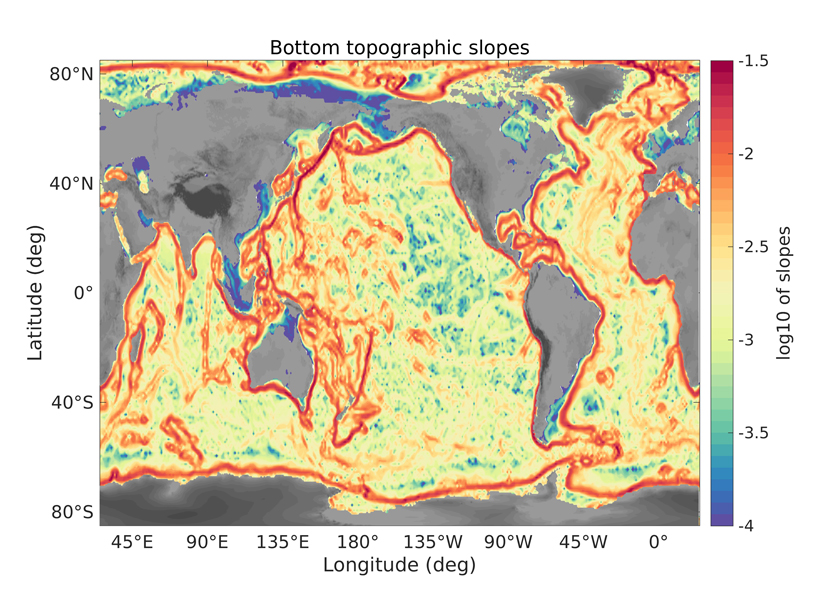Source: Geophysical Research Letters
Currents in the ocean are continually changing, influenced by factors such as “eddies,” circular movements of water, and “planetary waves,” large-scales waves within an ocean basin. The vertical structure of eddies and linear waves is traditionally understood by dividing the flow into “modes,” an orthogonal basis set for the flow. There are an infinite number of these modes, but the barotropic (depth-averaged) and first baroclinic (top-to bottom velocity difference) modes are usually considered to dominate ocean variability. However, other orthogonal basis sets exist, including “surface modes” which are formulated to have negligible amplitude at the ocean floor. Recent analyses of observations suggest that ocean variance is dominated by surface modes. This letter by LaCasce [2017] demonstrates that the presence of sloping bottom topography or bottom friction is sufficient to constrain the vertical structure of the flow to a “surface mode” structure. This result provides a physical justification for the observations of de La Lama et al. [2016], and implies that surface modes may be used to project surface satellite observations into the interior and to predict the direction and propagation speed of oceanic planetary waves.
Citation: LaCasce, J. H. [2017]. The prevalence of oceanic surface modes. Geophysical Research Letters, 44. https://doi.org/10.1002/2017GL075430.
—Andrew M. Hogg, Editor, Geophysical Research Letters
Text © 2017. The authors. CC BY-NC-ND 3.0
Except where otherwise noted, images are subject to copyright. Any reuse without express permission from the copyright owner is prohibited.

